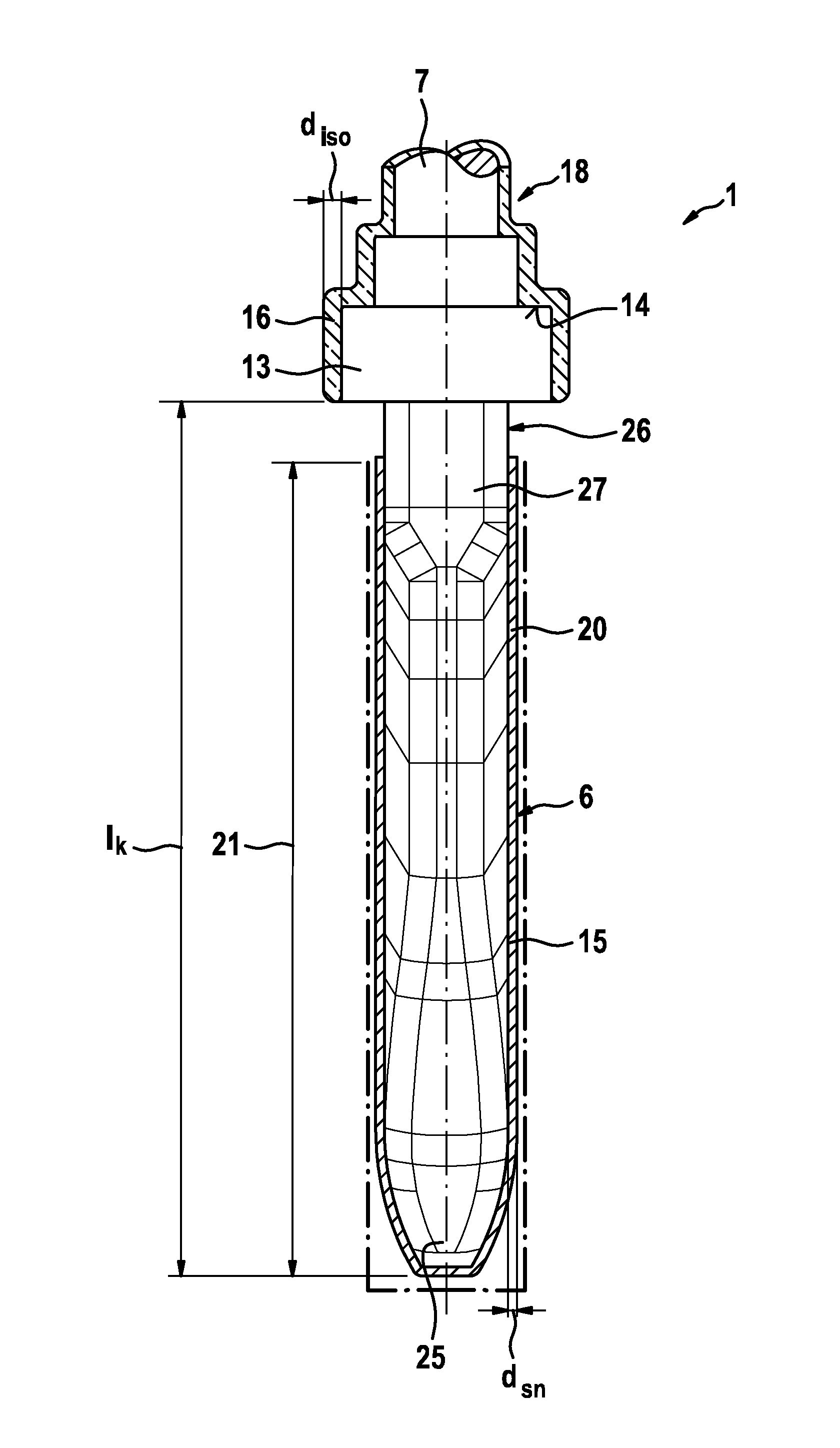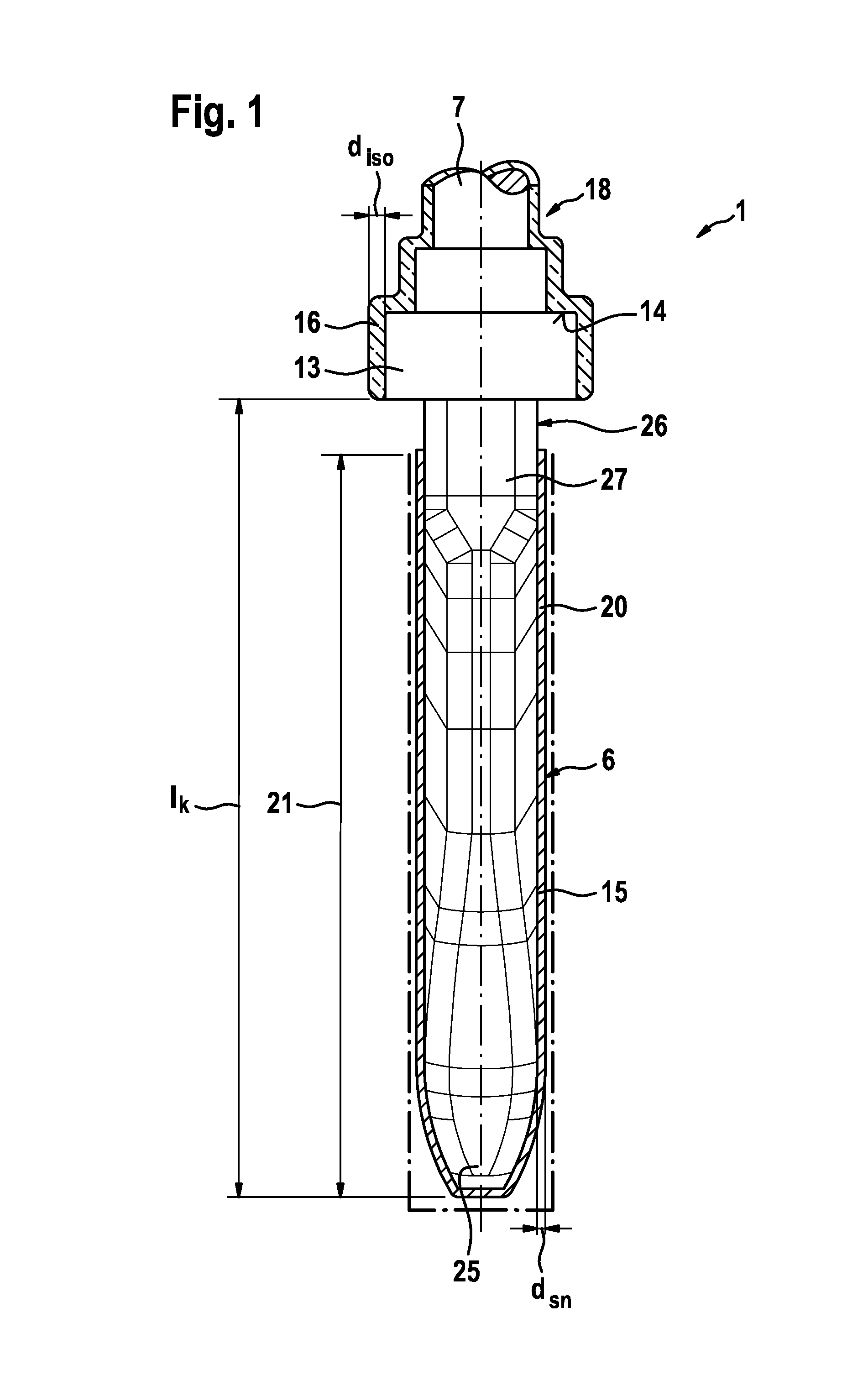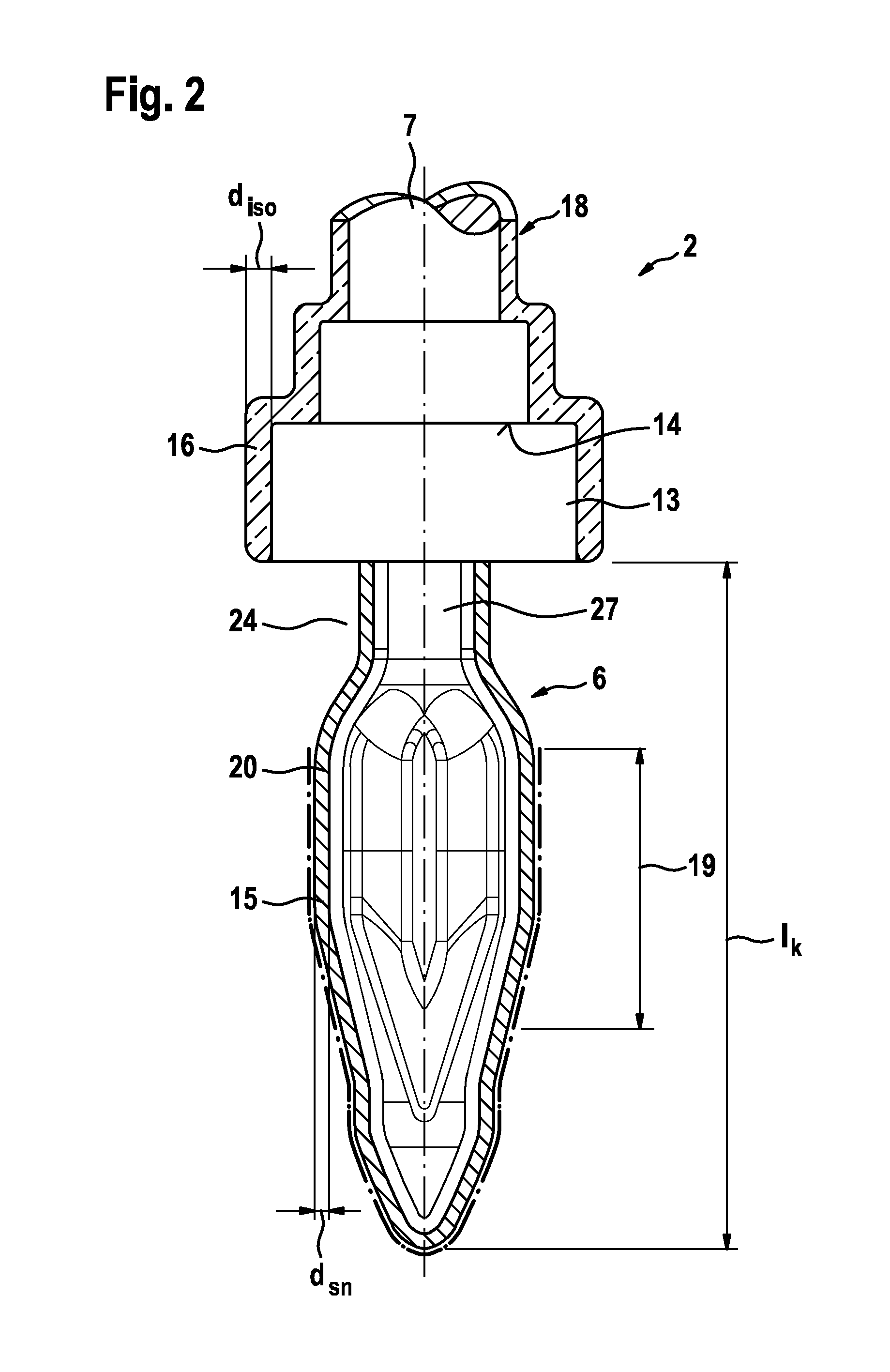Press-in pin for an electrical press-in connection between an electronic component and a substrate plate
a technology of press-in pin and electronic component, which is applied in the direction of coupling contact member, securing/insulating coupling member, electrical apparatus, etc., can solve the problems of short circuits that cannot be tolerated by electronic components such as abs or esp circuits in motor vehicles, tin-lead alloys in press-in tin coatings, etc., and achieves sufficient long-term stability, increase processing temperature, and the effect of ensuring the long-term stability
- Summary
- Abstract
- Description
- Claims
- Application Information
AI Technical Summary
Benefits of technology
Problems solved by technology
Method used
Image
Examples
Embodiment Construction
[0023]FIG. 1 shows a schematic view of a press-in pin head 6 of a press-in pin 1 according to a first embodiment of the invention. The press-in pin head 6 has a length IK which is matched to the thickness of a substrate plate depicted in FIG. 4. In this first embodiment of FIG. 1, the tip 25 of the press-in pin 6 has an oval shape in the longitudinal section thereof, the cross section of which is matched to an interference fit to a metalized contact hole of the substrate plate shown in FIG. 4. The oval tip then transitions into a shape having a polygonal cross section. A massive press-in zone 21 extends approximately over the entire length IK of the press-in pin head 6 and is covered by a layer 20 consisting of a tin alloy 15, which has a thickness between 5 μm≦dSn≦50 μm and a tin content [Sn] between 90 wt %≦[Sn]≦100 wt %.
[0024]A press-in pin collar 13 adjoins the press-in pin head 6, which collar transitions via a locking projection or, respectively, a press-in pin shoulder 14 int...
PUM
 Login to View More
Login to View More Abstract
Description
Claims
Application Information
 Login to View More
Login to View More - R&D
- Intellectual Property
- Life Sciences
- Materials
- Tech Scout
- Unparalleled Data Quality
- Higher Quality Content
- 60% Fewer Hallucinations
Browse by: Latest US Patents, China's latest patents, Technical Efficacy Thesaurus, Application Domain, Technology Topic, Popular Technical Reports.
© 2025 PatSnap. All rights reserved.Legal|Privacy policy|Modern Slavery Act Transparency Statement|Sitemap|About US| Contact US: help@patsnap.com



